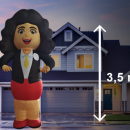How the Full Spectrum Inspectors Association Champions Indoor Air Quality

Introduction
Indoor air quality plays a critical role in occupant health, productivity and comfort. Studies show that air inside buildings can be far more polluted than outdoor air, with contaminants like mold spores, volatile organic compounds and particulate matter. Recognizing this, the Full Spectrum Inspectors Association has made comprehensive IAQ testing a foundational element of the full spectrum inspection process. In this article, we explore why indoor air quality matters, the protocols inspectors follow and the benefits for homeowners and businesses alike.
Why Indoor Air Quality Is Essential
We spend up to 90 percent of our time indoors, at home, in schools, offices and healthcare facilities. Poor indoor air can exacerbate allergies, asthma and other respiratory conditions. Long‑term exposure to airborne chemicals and mold can increase risks of cardiovascular disease, cognitive decline and chronic illness. Clean air is not a luxury; it is an imperative for health and well‑being.
The Four Pillars of IAQ Assessment
- Visual Inspection
- Inspectors examine HVAC filters, duct interiors and vent grilles for dust accumulation, microbial growth or structural damage.
- Condensation, visible mold or lingering odors alerts inspectors to targeted sampling.
- Air Sampling
- Using calibrated pumps, inspectors draw known volumes of air through specialized filters or culture media to capture mold spores and particulate matter.
- Multiple sampling sites, basement, main living areas, bedrooms, ensure representative data.
- Direct‑Reading Monitors
- Portable monitors measure real‑time volatile organic compounds (VOCs) and carbon dioxide levels, indicating off‑gassing sources and ventilation efficiency.
- Inspectors log data over time to capture fluctuations due to occupancy or HVAC operation.
- Surface Swabs and Bulk Samples
- Swabs from suspected mold hotspots provide species identification in laboratories. Bulk samples of drywall or insulation may be collected if initial tests prove inconclusive.
By layering these methods, inspectors achieve a comprehensive profile of indoor air quality.
Interpreting Laboratory Data and On‑Site Readings
Lab reports break down contaminant levels against established health guidelines. Certified Full Spectrum Inspectors analyze:
- Mold Species and Concentrations: Determining whether mold levels exceed normal outdoor baselines.
- VOC Profiles: Identifying compounds such as formaldehyde, benzene or toluene and comparing concentrations to safe exposure thresholds.
- CO₂ Trends: Evaluating ventilation needs by correlating occupancy rates with rising CO₂ levels.
This scientific rigor transforms raw data into actionable recommendations.
Mitigation Strategies and Follow‑Up Testing
Once issues are identified, inspectors advise on targeted solutions:
- Improving Ventilation: Adjusting HVAC intake rates, adding energy‑recovery ventilators or installing window exhaust fans.
- Addressing Moisture Sources: Repairing leaks, upgrading waterproofing and installing dehumidifiers to inhibit mold.
- Upgrading Filtration: Replacing basic filters with HEPA or activated carbon units in HVAC systems.
- Encapsulating or Removing Contaminated Materials: Professional mold remediation protocols for extensive growth areas.
Follow-up testing verifies the effectiveness of remediation, ensuring that air quality improvements are sustained.
Integrating IAQ with Full Spectrum Home Inspection
While standalone IAQ assessments are valuable, the Full Spectrum Inspectors Association recommends integrating them into the broader inspection scope. Combining air quality data with radon, water and structural evaluations yields a true full spectrum home inspection, delivering comprehensive insights on every facet of property health.
Benefits for Homes and Workplaces
- Health Improvements: Reductions in allergy symptoms, respiratory distress and sick‑building syndrome.
- Energy Savings: Properly balanced ventilation and insulation improve HVAC efficiency.
- Property Value: Buildings with documented IAQ safety measures command higher resale or rental rates.
- Peace of Mind: Occupants and owners rest easy knowing the environment has been thoroughly assessed by credentialed professionals.
The Ongoing Quest for Cleaner Air
Technology continues to advance. The association is exploring real‑time networked IAQ sensors, wearable exposure monitors and data integration platforms that merge IAQ results with overall building health dashboards. These innovations promise to make continuous monitoring the norm.
Conclusion
The Full spectrum building inspection has elevated indoor air quality from a niche add‑on to a core component of modern building inspections. By championing rigorous IAQ protocols, visual checks, air sampling, direct‑reading monitors and surface swabs, inspectors safeguard occupant health and enhance property value. For the clean air you deserve, insist on a full spectrum home inspection that leaves no question unasked.
Leave a reply
You must be logged in to post a comment.















